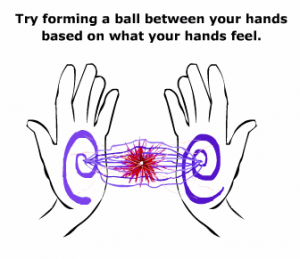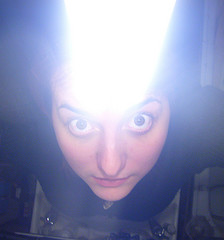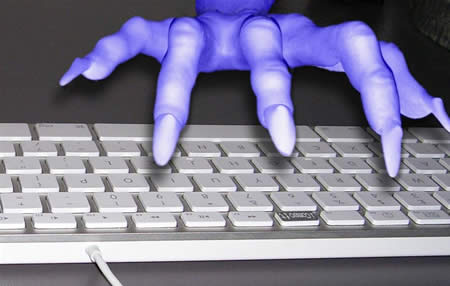How to control the world around you with mind power
There are simple tricks to flex the hidden mind power you possess, and like a bodybuilder looking to add more muscle mass, the key to realizing mind control is through regular, simple exercises. Psychokinesis, often referred to as PK, is a term used to describe the ability of the brain to affect inanimate objects and otherwise control your surroundings, and there have been many famous users of this ability. Benefit from their knowledge by practicing these simple exercises every day, and over time you will realize your mind’s full potential.
Starting with the right mindset is the most important prerequisite to your psychokinetic work out. Arrogance, fatigue, anxiety, doubt, and overexcitement are all enemies of your success, and will hinder even your best efforts. If you are considering developing your psychic powers with malicious intent, such as for greed, revenge or a desire for attention and fame, your powers will not manifest themselves. Approach these exercises with a humble, sweet, and open heart, and be ready to practice every day: discipline, willpower and patience will show you the path to your mental abilities.
Many beginners start practicing mind power by learning how to feel the energy between their hands with a ball of

PSI BALL
psychic energy, also known as a “psi ball.”
- Balance yourself by seeing yourself as the roots of a tree, reaching down into the solid earth. You are connected with the earth, bound to the soil, perfectly grounded.
- Understand that there is energy flowing through you at all times; this is called “psi,” and you must feel and recognize the flow of it throughout your body. A psi ball is created by moving this energy. Usually, people describe a psi ball as being about the size of a baseball, or maybe slightly larger, although some are large enough to act as a shield, fitting around the entire body.
- Gather this energy, and when there feels like enough energy, hold your hands out, keeping them steady. Make sure that whatever way you extend your hands (or hand), it feels natural and right.
- See the hole in your hand. A small door has been unbolted and the psi, or energy, is trickling out. Can you feel the psi yet? Is it a slight tingling sensation, or more like a sense of pressure or emanating heat? When you think you can feel the psi, try to move your hands close together. If there is a resistance sensation, however slight, you know it’s there.
- Play with the psi flow. Now you can use visualization to make the available psi into a ball, a cube, a pyramid: only your imagination restricts you.
- If you were just practicing, simply release the ball.
- After you have gotten the hang of your psi ball, you can try programming the psi ball to get a friend’s attention.
- With very clear mental intent, send the ball to “poke” someone and give them a message. Go ahead and say the words in your head; this will help solidify your intentions.
Another invaluable tool which will help you to refine your PK powers is the psi wheel. The observable nature of your power through the psi wheel will be extremely satisfying. Try this when you have mastered your psi ball. You will need a small bit of paper or foil, an eraser, and a needle.
- Cut a piece of foil or paper down to the size of a Post-It. Fold it diagonally and press down on the fold to create a crease. Unfold.
- Create another diagonal fold on the opposite corner. Crease. There should now be a crease in the shape of an “X”.
- Now fold the square lengthwise and widthwise, creating a cross through the center.
- Pinch the “X” shape, allowing the center to pop up. The paper should look somewhat like a three dimensional, four pointed star. You’ve created a psi wheel!
- Pressed the pointed end of your needle into the eraser. It should stand up perfectly straight.
- Set your wheel on the center of exposed end of the needle. You are ready to use the psi wheel!
- Place your on the side of the wheel, without touching it, and concentrate. Your palm should be facing the psi wheel. It will rotate when you’ve gathered sufficient psi.
Here’s another basic skill building technique which uses a candle flame:
- Light a candle, any type will do.
- You will now attempt to fuse your energy together with the candle’s energy field. Relax your mind and focus on the flame; visualize yourself becoming one with the flame; you are the flame. This is called “pacing.”
- “Lead” the candle flame. Picture the flame growing longer, then receding, waning to the side as if being blown, then bending to the other side.
- When you’ve had success, visualize your separation from the candle.
Next, try working with a pendulum. There’s no need to purchase a special pendulum; you can create one by simply attaching a ring to a string or thread. The exercise works best if the pendulum is attached to a stand and is hanging in front of you, rather than held in your hand.
- Pace the pendulum; remember, to pace is to focus until you merge with the object or material.
- Lead the pendulum; remember, to lead is to use your fused energy to move the object through mental projection. Imagine the pendulum moving back and forth, side to side, and spinning.
- When you’ve been successful, emerge from the pendulum and return to your normal state.
When you have mastered the flame, the pendulum, the psi ball and psi wheel, you are ready to attempt to manipulate small objects.
- Place a lightweight, small object on a flat surface.
- This will sound familiar, because it is. Relax, and begin to pace the object. Your mental powers should now be strong enough, through practice with other objects, to do this effectively.
- Imagine that a tunnel extends between you and the small item. Only allow your awareness to acknowledge the tunnel and the item at the end of it.
- Visualize hands reaching out from your mind and dragging the item through the tunnel. You should “feel” the pull.
- When you are experiencing the pulling sensation, it might help to make an “nnnnn” sound with your mind.
- Watch the object move, using only mind control.



























